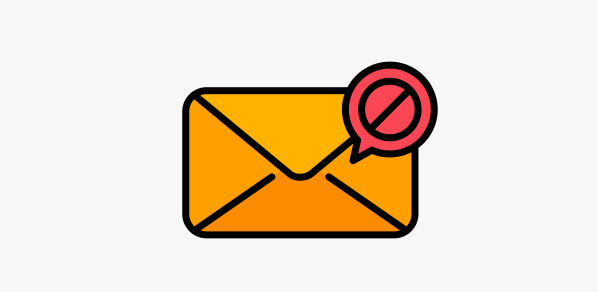This article will guide you on how to find blocked emails in Gmail app and the process of checking blocked email list in Gmail app. Follow our instructions to regain access to important messages and manage your email settings effectively.

Gmail's spam filtering system is designed to protect users from unwanted emails. When Gmail identifies an email as spam, it may be blocked, preventing it from reaching your inbox. While this can be helpful in keeping your inbox clean, it's important to understand why emails might get blocked and how to manage your blocked email list.

Several factors can contribute to an email being blocked by Gmail:
To find blocked emails in the Gmail app, follow these steps:
1. Open the Gmail app: Launch the Gmail app on your mobile device.
2. Tap the "Menu" button: Look for the three horizontal lines in the top left corner of the screen and tap on them.
3. Access "Spam folder": Scroll down the list of folders and tap Spam to open the spam folder.
4. Get the Blocked List: You’ll see a list of emails that Gmail has blocked and marked as spam. Select any that you believe might be blocked by your existing filters.
If you want to unblock an email sender or domain, follow these steps:
1. Open the "Blocked" list: Follow the steps above to access the blocked list.
2. Find the sender or domain: Locate the sender or domain you want to unblock.
3. Tap the "Unblock" button: Next to the sender or domain, you'll see an "Unblock" button. Tap on it.
The sender or domain will be removed from the blocked list, and emails from them will no longer be blocked.
While Gmail's spam filtering system is generally effective, there may be instances where legitimate emails are mistakenly blocked. If you believe that an important email has been blocked, you can try the following:
By understanding how blocked emails work in Gmail and following these steps, you can effectively manage your blocked list and ensure that important emails are not missed.
Gmail shares 15GB free space with Google Drive, Google Photos, and other Google service, so it is easy to get full and prevent you from receiving any new incoming emails no matter they are blocked or not in your blacklist. Thereby, you can regularly clear unnecessary emails, or move important emails to another location (either local drive or cloud drive) as a backup for an easy and efficient recovery.
In such cases, we highly recommend you trying MultCloud. You can add your Gmail and Outlook account into it, and access all your messages in one interface. Moreover, you can convert those emails into PDF format in bulk and migrate them to the local or cloud drive. For the most accessibility, saving emails to cloud drives is much better.